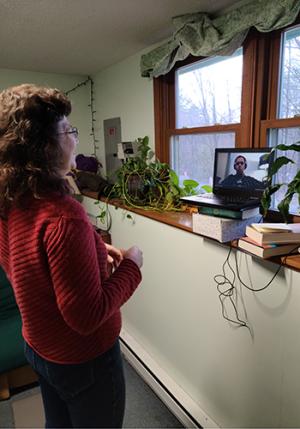This spring 2021 semester has offered a wide range of courses across a variety of different disciplines and majors, including a public history course instructed by Professor Beth Salerno, Ph.D., of the history department. Through learning about history that is written for and by the public, students have been able to create their own projects and create their own meaning surrounding the world of public history.

The field of public history can cover any variety of historical outlets or sources that are preserved through the public, such as museum exhibits, digital archives, or evidence used in legal battles. Public historians also preserve relics from the past like houses, archaeological sites, documents, and even memories and oral stories. Salerno’s course acts as an introduction to the field of public history, allowing students to investigate how public history is maintained, the scholarly and ethical issues brought up, and the different ways it can serve the community.
“While every history class uses primary sources, this course asks specifically how did those sources get saved and how were they transcribed or edited,” explains Salerno. “We specifically think about the job skills needed to do public history and the assignments are designed to develop some of those skills.”
Rather than focusing on research papers or essays, students involve themselves in a variety of group projects and hands-on assignments meant to provide experience and allow students to personally add to the world of public history. Groups could focus their studies and research on any number of topics, ranging from organizing the Office of College Communication and Marketing’s vast photo archive, learning the process of verifying historical buildings in New Hampshire, and curating historic sites across the country utilizing an app called Clio.
“Clio is an app that shows you historical places near you and other locations, mostly in the U.S. Each entry has a little description with some images of the place,” says Allison Milne ’22, a history major enrolled in the course. “We must put in about thirty hours individually on this project, so my team has been focusing on reworking already existing entries on sites like the Palace Theater and researching new places like our own college and the [New Hampshire Institute of Politics] NHIOP.”
While each student is part of an individual or group project, the class as a whole also completed its own project as a collective unit. “Utilizing our background from our readings and discussions, we as a class came up with a collective guideline for transcribing the Winchester Antislavery Society minute book,” explains Emma Bickford ’22, a history and marketing double major. By focusing on the skills related to transcription, the class as a whole learned the importance of information being as accessible to the public as possible.
While the projects and lessons of the course are centered around the discipline of the history, Salerno insists that the field of public history is important to all people and students, regardless of whether or not they are planning to pursue a career or position in the world of history.
“The course raises questions and builds skills for any student, whether or not they are thinking about a career in museum studies, archival work, or historic preservation,” says Salerno. “If you have ever been to museums, historic sites, a National Park, or wondered about that war memorial in the middle of your town, you can learn more about our shared– and often highly contested– American memory in this class.”
